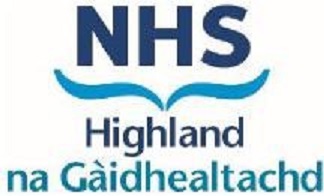Venous thromboembolism (VTE) and travel (Guidelines)

Audience
- Highland HSCP
Venous thromboembolism occurs in travellers due to immobility, direct compression of the venous system at the back of the knee and possible activation of the coagulation system in response to air travel. However, the absolute risk of VTE in travellers is low. Risk increases with the duration of flight. The absolute risk of VTE in healthy people has been calculated as one event per 106,667 flights for flights lasting less than four hours, and one event per 4656 flights, for flights lasting over four hours. There is little evidence with which to make firm recommendations.
Risk factors for VTE include:
- Previous DVT or PE off anticoagulants
- Active malignancy
- Recent surgery or trauma, particularly to the abdomen, pelvis, or legs in last four weeks
- A family history of VTE in first degree relative
- Aged over 60 years
- Inherited thrombophilia
- Large varicose veins or chronic venous insufficiency
- Limited mobility (for example, a lower-limb fracture in plaster)
- Obesity (body mass index greater than 30 kg/m2)
- Polycythaemia
- Pregnancy, or up to six weeks postpartum
- Prothrombotic state g. autoimmune or inflammatory conditions
- Use of oestrogens, such as oral contraceptives or hormone replacement
Management
Counsel patients with higher risk of VTE and allow them to make a decision as to whether flights should be postponed until the risk reduces.
In patients with a personal history of VTE we take the pragmatic solution of offering either a prophylactic dose of LMWH or rivaroxaban in all flights over four hours. If their thrombotic event was associated with a flight less than four hours we offer this for all flights. There is little good quality evidence for which to advise on other scenarios but if there are multiple risk factors then a similar regime can be considered. Rivaroxaban has the advantage of not requiring any sharps bins. We advise to take one 10 mg dose prior to flying (each way) for every 24 hours in flight. For example a six hour flight would need one 10mg dose outbound and one dose for the return but if a fight or journey lasted more than 24 hours then a second dose would be required each way. If LMWH is used, use a pre-filled syringe and ensure patients are able to administer. Provide written information on the need for needles and provide a sharps bin.
For patients with other risk factors class 1 stockings (exerting a pressure of 14 to 17 mmHg at the ankle) or proprietary flight socks can be considered. These are contraindicated if the ABPI is less than 0.8. Aspirin is not advised. Patients should move around frequently and perform calf compression exercises. Keeping hydrated seems sensible but there is no evidence to suggest it reduces risk of VTE. Patients need to inform their travel insurance company of any pre-existing medical problems.
It is sensible to offer advice on the signs and symptoms of VTE in those at risk and the need to present if these develop.
